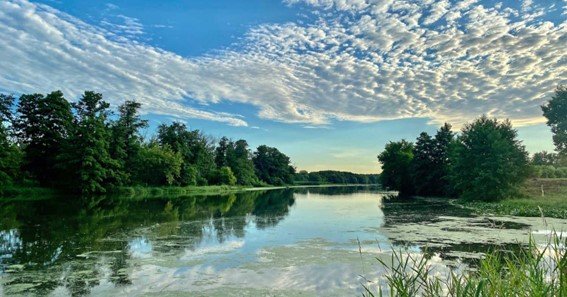The depth of a small creek or river is a dynamic characteristic influenced by various natural and anthropogenic factors. Understanding these influences is essential for environmental studies, recreational planning, and ecological conservation.
Natural Variations In Depth
Small creeks and rivers exhibit significant depth variations along their courses. In some sections, depths may be as shallow as a few inches, while in others, they can exceed several feet. For instance, Middle Branch Chillisquaque Creek in Pennsylvania typically ranges from a few inches to about a foot deep, with certain areas reaching over 20 inches.
Factors Influencing Depth
Several factors contribute to the depth of small creeks and rivers:
- Topography: The slope and elevation of the surrounding land affect water flow speed and erosion patterns, influencing depth.
- Substrate Composition: The type of materials (e.g., sand, gravel, clay) that make up the creek or riverbed can impact erosion rates and sediment deposition, altering depth.
- Vegetation: Riparian vegetation stabilizes banks and can reduce erosion, affecting depth consistency.
- Hydrological Inputs: The volume of water entering the system from precipitation, tributaries, or groundwater sources directly impacts depth.
Seasonal And Weather-Related Changes
Depths of small creeks and rivers fluctuate with seasonal and weather variations:
- Spring and Early Summer: Increased rainfall and snowmelt can elevate water levels, deepening creeks and rivers.
- Late Summer and Fall: Drier conditions often lead to reduced water levels and shallower depths.
- Storm Events: Heavy rainfall can cause temporary surges in depth due to increased runoff.
Human Impacts
Anthropogenic activities also play a role in altering creek and river depths:
- Construction and Urbanization: Development can change natural water flow patterns, leading to erosion or sediment buildup that affects depth.
- Dams and Water Withdrawals: These can significantly alter natural flow regimes, impacting depth downstream.
- Agricultural Practices: Runoff from agriculture can introduce sediments and nutrients, changing the physical characteristics of water bodies.
Measuring Depth
Accurate depth measurement is crucial for various applications:
- Manual Methods: Using marked poles or weighted lines to gauge depth at specific points.
- Electronic Devices: Employing sonar or pressure transducers for continuous depth monitoring.
- Remote Sensing: Utilizing satellite or aerial imagery to assess depth variations over larger areas.
Conclusion
The depth of small creeks and rivers is a complex interplay of natural processes and human influences. Recognizing these factors is vital for effective management, conservation, and utilization of these freshwater resources.
FAQ
1. What is the typical depth range for small creeks?
Small creeks can vary widely in depth, from a few inches to several feet, depending on location and environmental factors.
2. How do seasonal changes affect creek depth?
Seasonal variations, such as increased rainfall in spring or drought conditions in summer, can lead to fluctuations in creek depth.
3. Can human activities alter the depth of small rivers?
Yes, activities like construction, damming, and water extraction can significantly impact the natural depth of small rivers.
4. Why is it important to measure the depth of creeks and rivers?
Measuring depth is essential for flood management, ecological studies, navigation, and recreational planning.
5. What tools are used to measure the depth of small water bodies?
Tools range from simple marked poles to advanced sonar equipment and remote sensing technologies.










